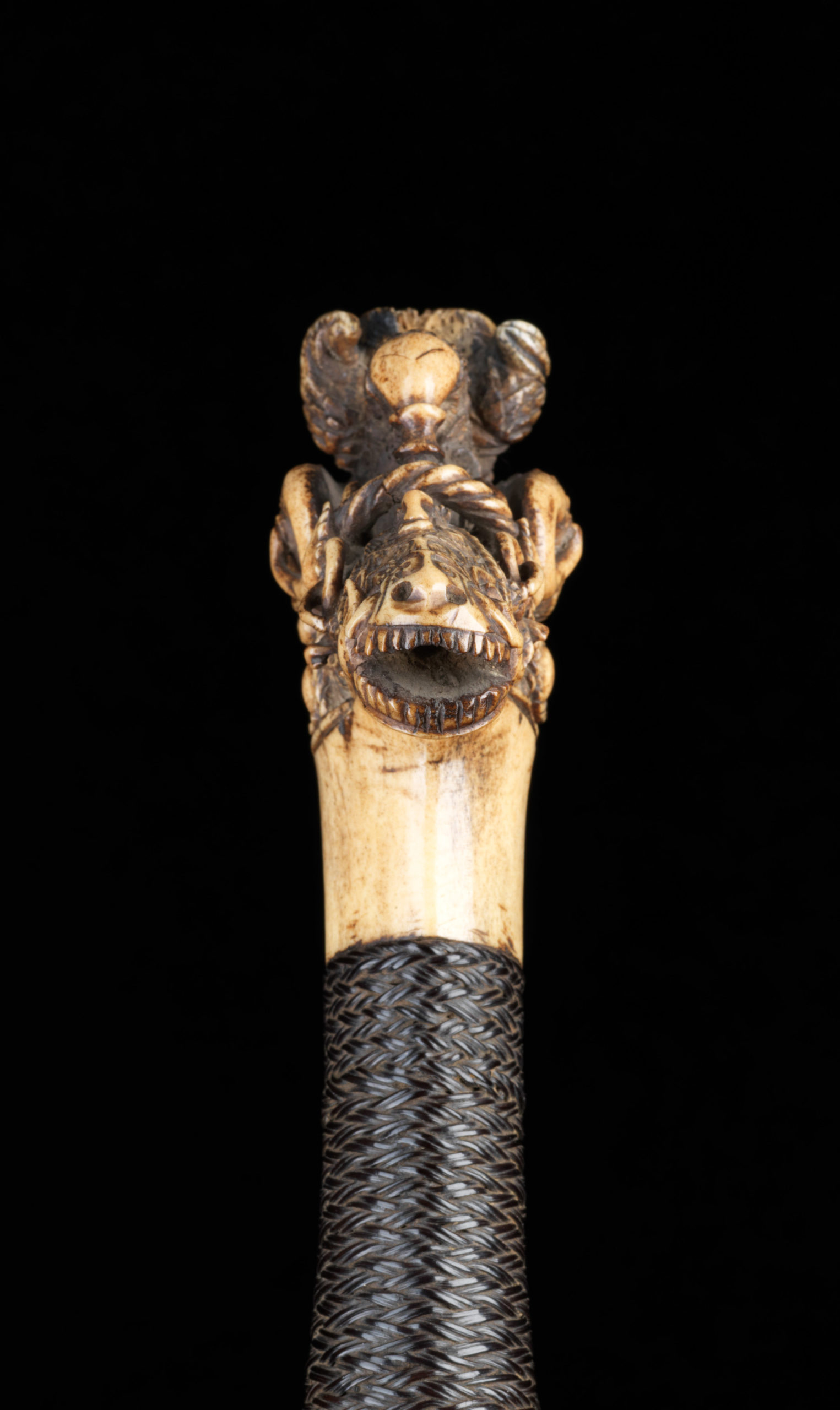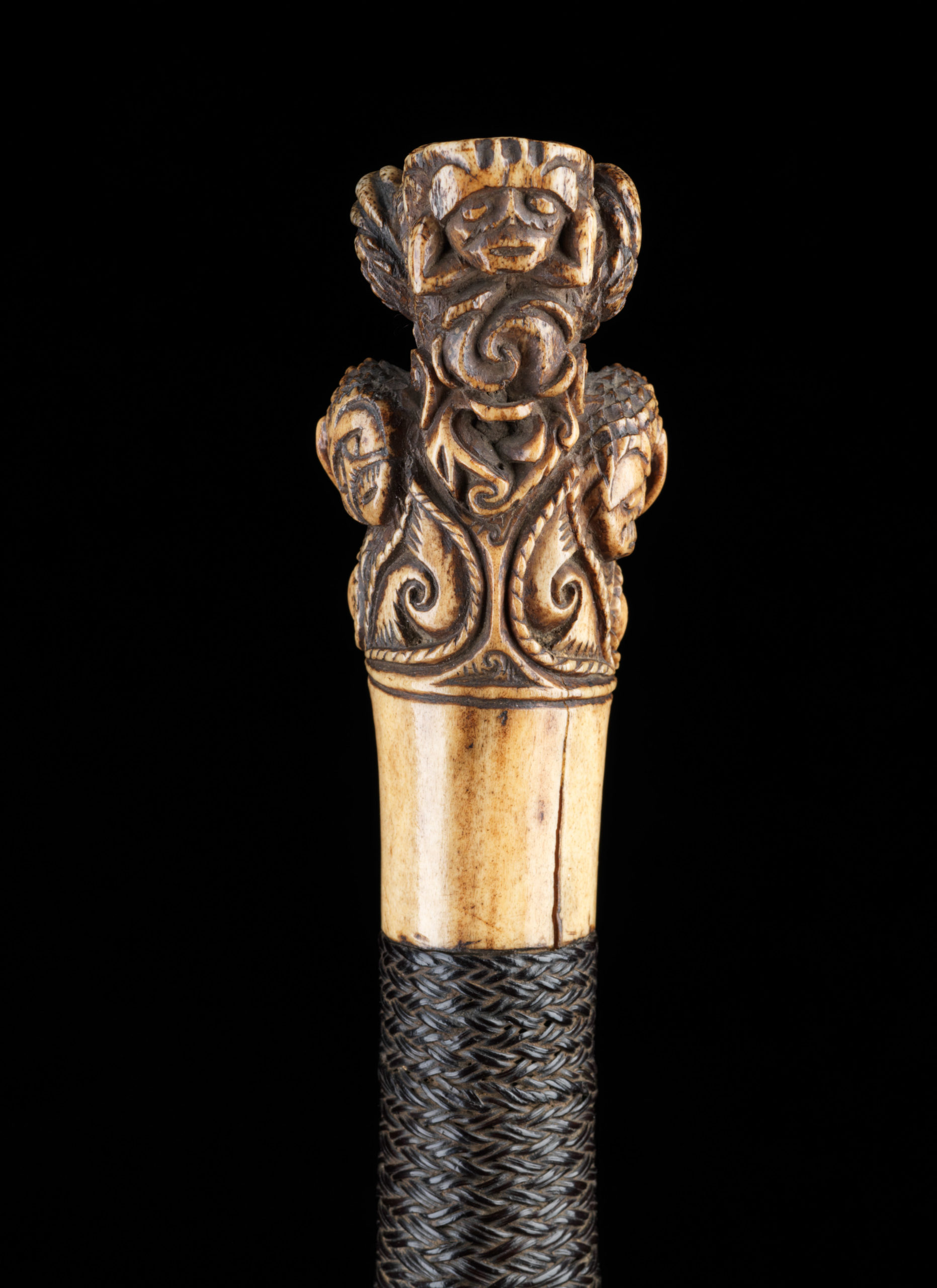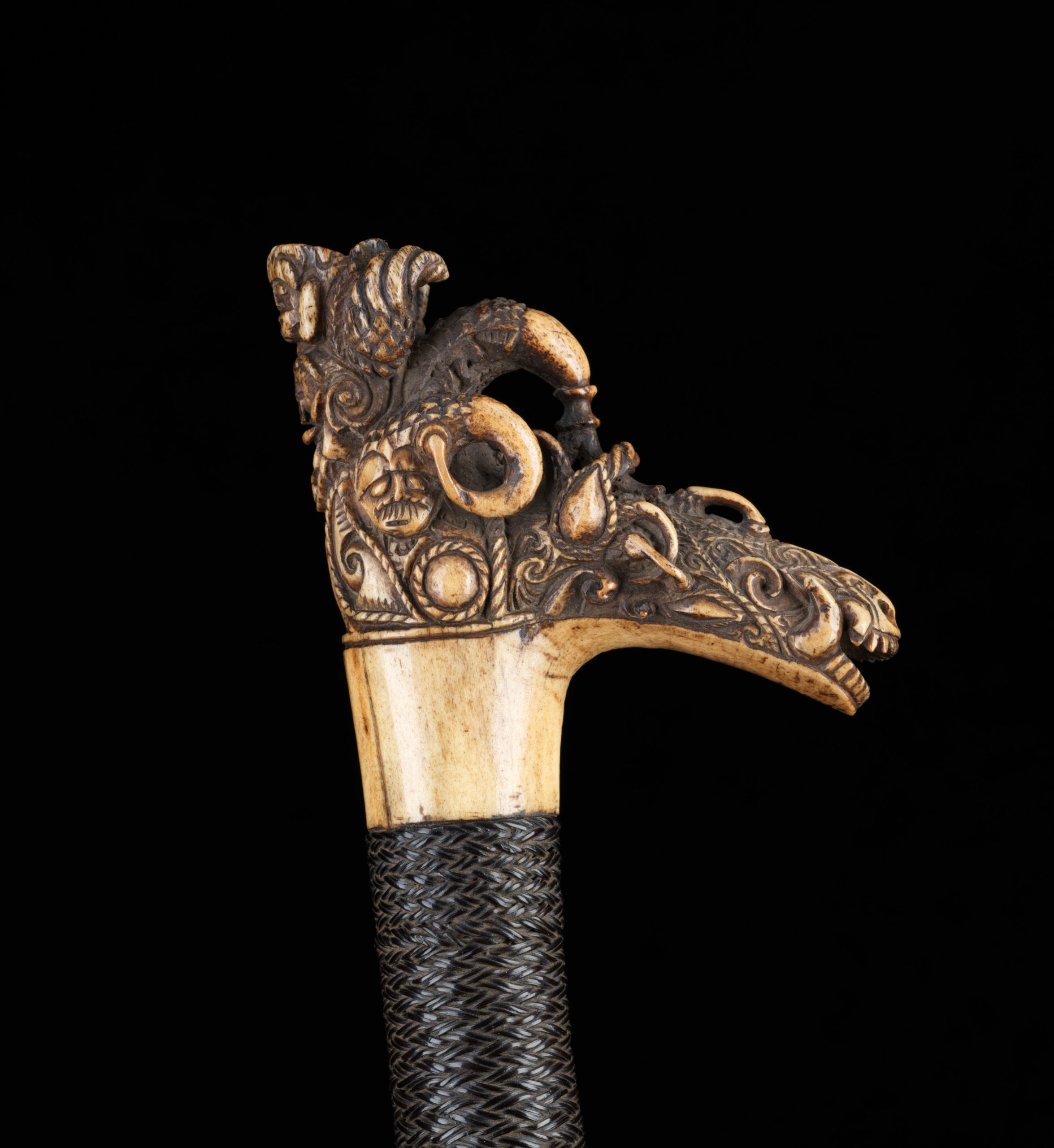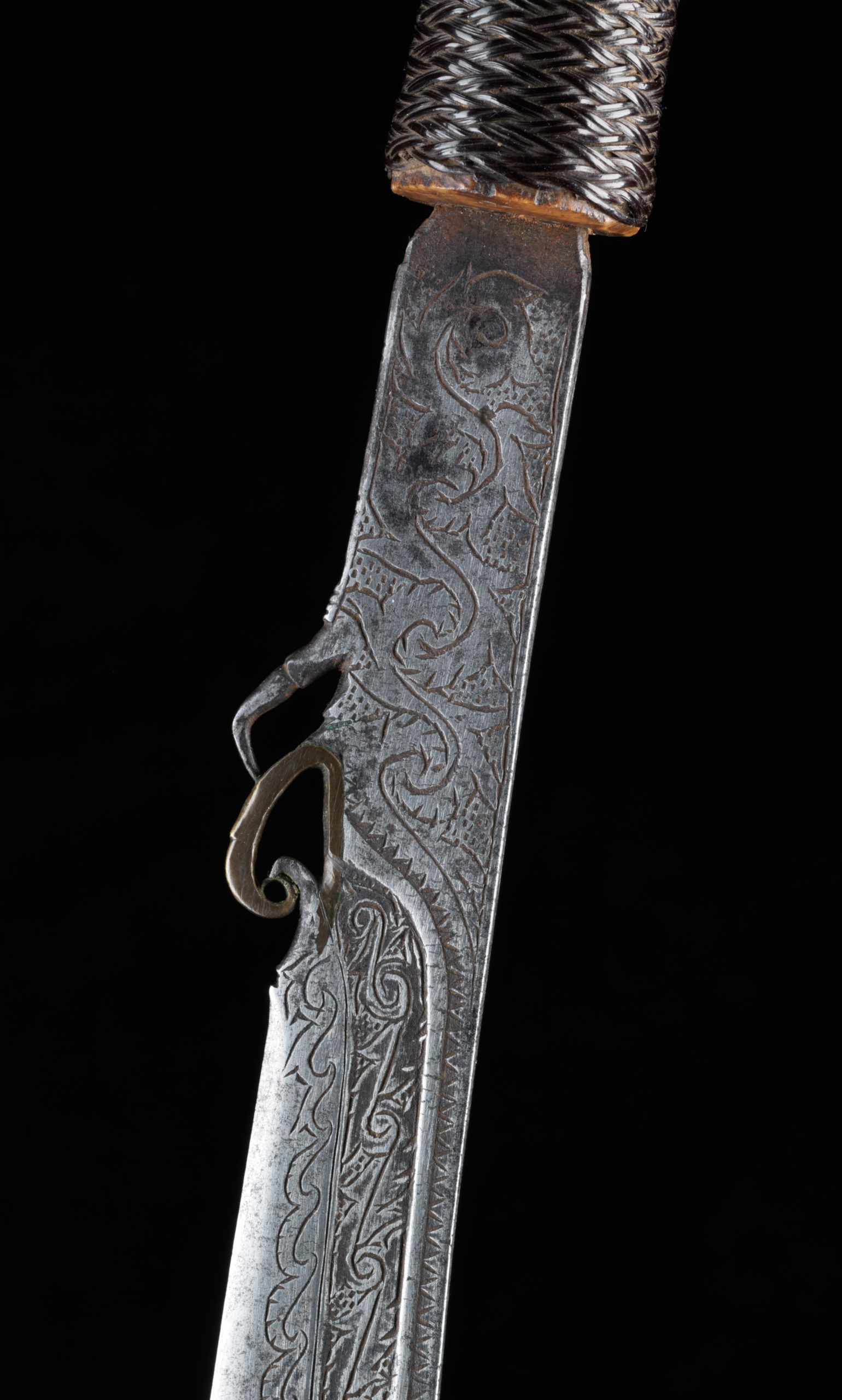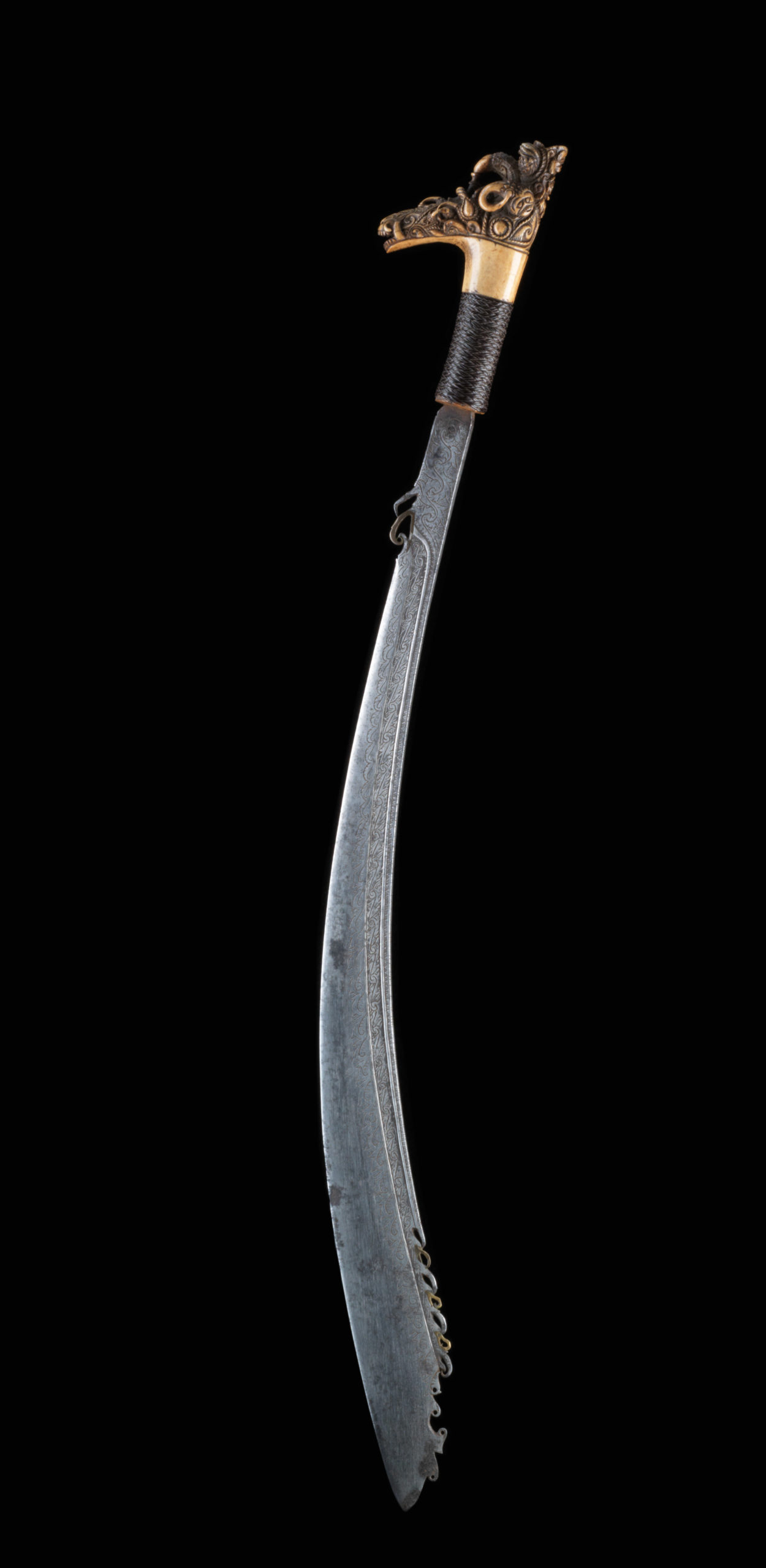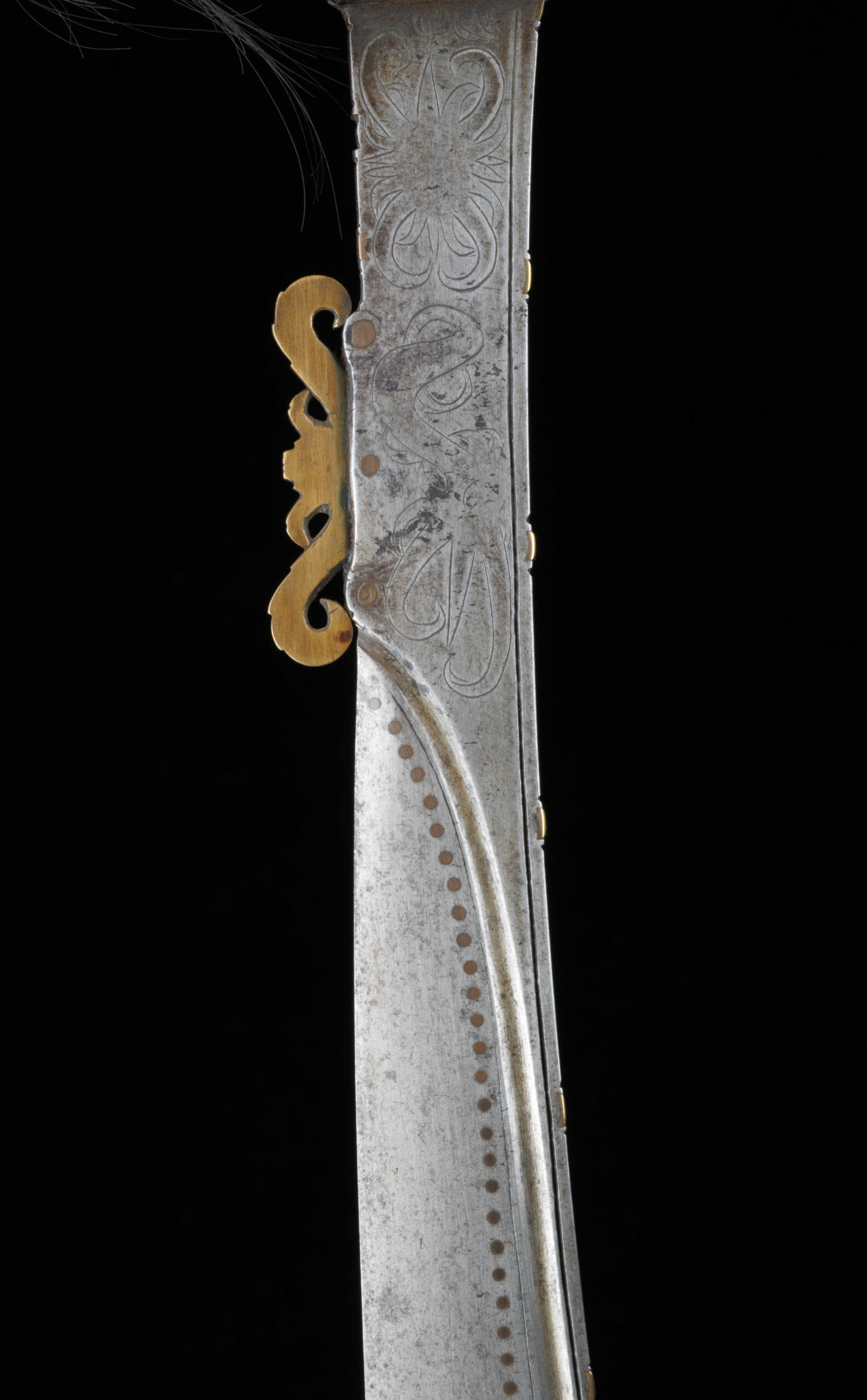Jimpul “duku amat “
| Object | Jimpul “duku amat” |
| Culture | Borneo West-, Sarawak, Dayak, Iban |
| Time | 19th century |
| Dimensions | Length 82 cm |
| Material | Steel, soft metal, stag horn, rattan |
The object presented here is a jimpul or nyabur, a sword that is characteristic of the Iban-Dayak in Sarawak (Northwest Borneo) and is exclusive to them.
The jimpul is said to have originated in the first half of the 19th century as a hybrid form of the mandau (malat) of the Ngadju, Kayan and Kenyah-Dayak and the parang pedang of the Malays. Although such an explicit chronological classification seems to be daring, it is nevertheless certain that this is a relatively young sword form. The heavy single-edged blade is curved, widens towards the front and is decorated by pit cut with flat bottom and chisel work. Additional accentuation is provided by narrow decorative grooves, also chiselled, which flank the main pit, and the elaborate engraving of the blade’s back. The blade flanks converge in a slightly convex shape to form a sharp, thin cutting edge of high hardness. The type of chisel decoration is clearly reminiscent of decorative forms of the Moro and the Illanún groups of the southern Philippines (Mindanao) and partly also of North Sulawesi, who played a similar role as sailors and pirates to the Iban and had clear cultural overlaps with them – apart from their Muslim confession, which excluded head hunting and demanded abstraction in the decorative forms. Some of the trunk-like elements (so-op) in front of the chancel (sloping back) are set in brass and hammered in with a form-fit.
The dimensions of this sword represent the maximum that still allows it to be used as an effective weapon that can be wielded with one hand. The weight is approximately 1 kg, which is the upper limit for this type of weapon, especially since it is concentrated in the blade. The blade seems to be made of industrially produced steel; a refining structure is not visible. It can therefore be assumed that the weapon dates from the early to mid 19th century and has already been forged from (English) mild steel. This fact can also be well integrated into the historical context, as will be shown below.
The grip made of deer antlers and the dark, dark hardwood double-edged sheath with decorative plaques of antlers on the front are a combination of typical Iban decorative elements. Repeatedly the motif of the “trophy skull ghost” is depicted. This is interrupted by rope-like ornamental bands and scaled areas that almost look like body parts of sea monsters. The claw or comma (angel) decorative element, which can still be derived from Chinese Zhou art, and the attached spiral are used sparingly, but then depicted very emphatically. The intermediate areas are provided with small suspended spirals. Bar-like, undercut elements lead from the trophy skulls and elsewhere to the handle (“main aso“). They merge into the scaled areas and in the case of the skulls can be seen as an indication of the ethereal component of the “head-trophy-spirit”. Whether the scales allude to the symbolic power of the crocodile cannot be determined; in connection with the “ropes” a maritime context (“sea-dayak” as a new ethnogenetic term at that time) can also be assumed. Contemporary British naval sabres, for example, also show maritime symbolism on the handle, and the British had many disputes with the Iban. Protruding head appendages, on the other hand, seem to indicate soul substance from the head or skull. Both the attached spiral (double spiral is a morphologically incorrect term) and the “lintah” leech motifs (hooks, claws) embody head-hunting (kajau), probably because the entities that originally represented these motifs were symbols of the head-hunting warrior state and the resulting fertility. At the back of the handle there is a human figure with a spiral suspended in the chest area, perhaps representing a cultural hero or the Singalang Burong, a warrior deity known to the Iban, who embodies the “successful headhunter par excellence” and the Lord of the war oracle.
This handle is in a way prototypical for Iban handles. The art of the Iban and Dusun groups differs fundamentally from that of the other Dayak in that the individual elements, such as the aso motif or the anthropomorphic forms (limbs as dissolved elements, “leech” motifs as well as the attached spiral, are handled and assembled in a freer way, deprived of their original canon of meaning. Thus, for example, the aso motif (literally “dog”, as a magical weakening of the original meaning), i.e. the Chinese dragon long, which according to Prof. Hein (1889) can be derived from the crocodile as an ancient symbol of fertility, has degenerated, e.g. in Tatauier motifs to the “crab” motif or to a meaningless arrangement of spirals and tendril-like forms. According to Nieuwenhuis (1907), Hein (1889), Johnsson (1912) and other early authors, mandau handles are also stylised interpretations of the dragon motif and of the ancestor positioned on the aso dragon (or crocodile), which can be seen even better as a total constellation of Indonesian handles, e.g. on Niasian handles (bekhu figure from the lasara dragon being), but rarely in this striking form as in our example. The sense of the mythical creature or dragon or crocodile motif comes to the fore again here through the toothed mouth at the end of the “handle beak”.
The Iban carving is rarely executed in the filigree quality of the Kayan and Kenyah handles, but is very expressive and focused on superficial meaning.
With its imposing dimensions and martial habitus, the decidedly “striking” decorative canon and the repeatedly appearing skull motif, this sword embodies the tradition of the naval warriors in a very vivid way. The almost exuberant head-hunting and seafaring symbolism (skulls, scales, ropes etc.) makes it almost seem like the “paradise sword” of a high-ranking Iban. The origin from the early or middle 19th century; in the opulent style of the late Brooke-/ Dent-era, can be considered as secured.
Supplementing Literature Back to room view




